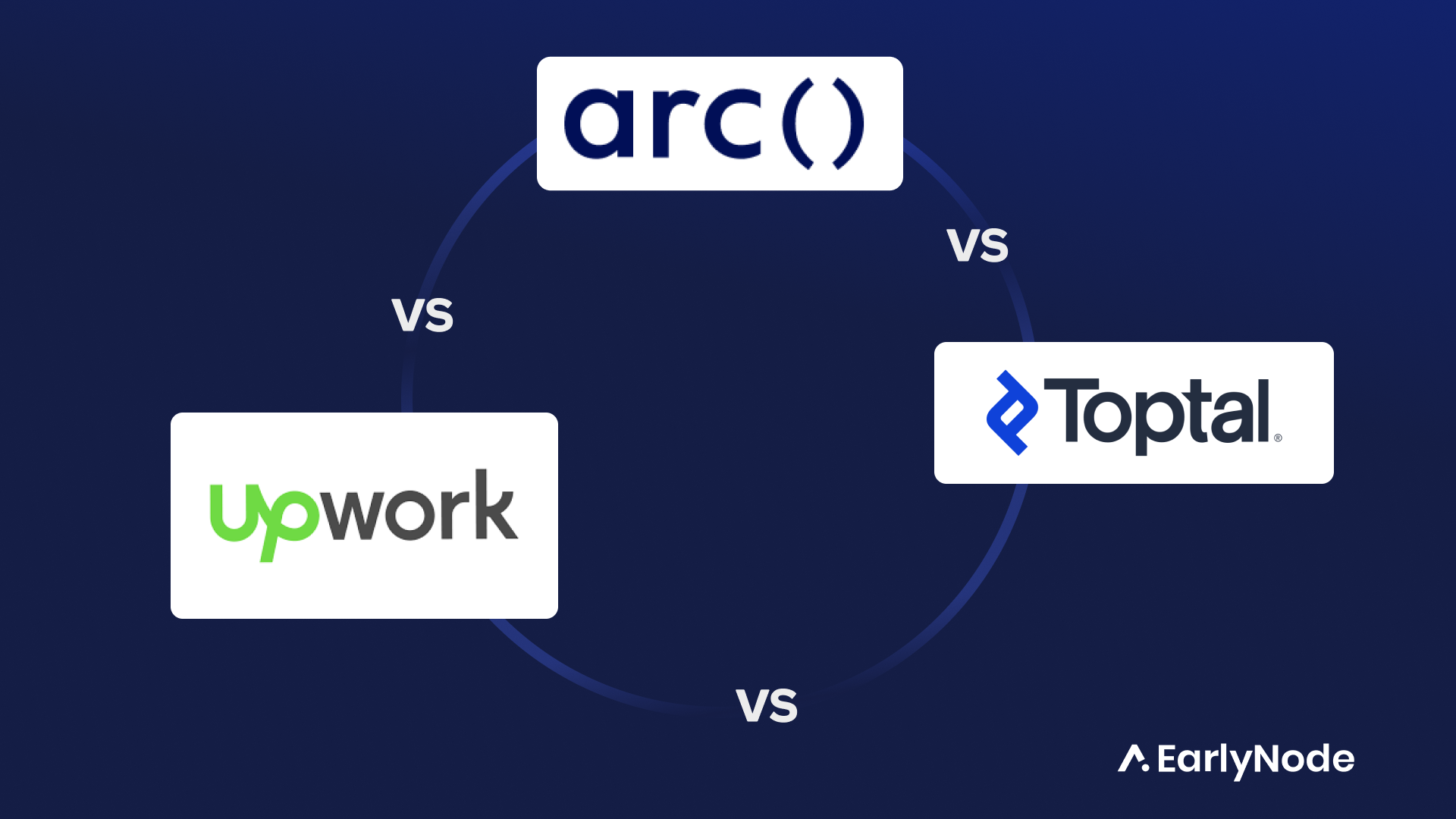How to Hire the First Software Developer for Your SaaS Startup

It gets difficult to hire your first software developer if you’re a SaaS startup that wants to grow – it takes time, resources, and a lot of research.
And if you don’t have an established in-house team, finding and hiring your first developer can get even more challenging. The quality of your team is essential to the success of your startup, and hiring the right developer is crucial.
In this blog, we’ll provide you with a step-by-step guide on how to hire your first software developer, helping you to build a team that will grow your startup to the next level!
Should You Hire More Developers for Your SaaS Startup?
You might be confused about whether to hire more developers for your startup or not – if you’re reading this article, chances are that you’re facing some of these issues:
- You’re spending too much time on development tasks as a founder instead of focusing on growing your business.
- Your SaaS is buggy, and you’re getting negative feedback from users.
- You’re struggling to keep up with customer demand, and your software is not scaling well.
- You’re losing ground to your competitors because they have better software.
- You don’t have the technical expertise to build and maintain your SaaS product.
- You want to add new features to your software but don’t have the capacity to implement them.
- You want to integrate with other software platforms, but you don’t have the technical knowledge to do so.
Hiring a SaaS developer can help you address these problems and help you scale as much as possible. The right developer can help you focus on growing your business while you leave the technical details to them.
But the question is: how do you hire the ‘right developer’ in the first place?
How Do You Hire The First Developer for Your Startup?
Hiring the first software developer for your SaaS startup can be an exciting yet exhausting task.
As a SaaS founder, you need to ensure that the person you bring on board has the right skills, experience, and mindset to help you build a product that will meet your customers’ needs and expectations.
Here are 7 steps you need to follow to hire the right developer for your startup:
Step 1: Determine your Development Needs
Before you start looking for a software developer, you need to have a clear idea of what you want them to do. Start by defining the scope of the project and the skills required to achieve your goals.
This will help you identify the level of expertise and experience your ideal candidate should have. Consider the technologies, tools, and platforms you’ll be using and make a list of the specific skills you’re looking for.
Here are some questions you can ask yourself to identify your needs:
1. What is the primary problem your product solves and what benefits will it provide to your customers?
2. What key features do you want to include in your product?
3. Will you be developing a website, a mobile app, or both?
4. Is it a short-term or a long-term project?
5. What is your hiring budget for this project? (salary for developers, equity, additional benefits, etc.)
Once you’ve fully determined your need of hiring a developer, then move to Step 2. 🔽
Step 2: Create a Job Description
Based on the needs you identified in Step 1, create a job description that outlines the role and responsibilities of the software developer.
Be clear about the experience, skills, and qualifications required, as well as the specific technologies and tools they’ll be working with. Highlight the benefits of working with your company, such as the opportunity to work on an exciting project with a growing team.
Whether you’re recruiting in-house or outsourcing it to an agency, it’s important to be crystal clear on the expectations you have of the candidate to avoid hiring the wrong person and any confusion regarding the job.
Here’s a small checklist to create a reasonable job description:
- What type of developer are you looking for? (e.g. Web, Mobile, Front End, Back End, etc.)
- What tech stack skills are required to have? (e.g. languages, tools, certain soft skills, etc.)
- What level of education is necessary for the position?
- How many years of experience should the ideal candidate have?
- What tasks are they expected to do daily?
Step 3: Post the Job
Posting the job description on relevant platforms is crucial to attracting the right talent. Job platforms like LinkedIn, Glassdoor, and Indeed are great places to start. You can also leverage social media platforms like Twitter, Facebook, and Instagram to promote your job openings and reach a wider audience.
Reaching out to your network and asking for referrals can also be a great way to find highly qualified candidates. It’s important to be transparent about the job requirements and what you’re looking for in a candidate to attract the right talent and build a strong team for your organization.
Step 4: Screen Candidates
As applications begin to arrive, it’s important to review the resumes carefully to find candidates whose skills and experience match your requirements.
With that said, it’s not enough to rely solely on resumes; you should also consider using additional tools like skills assessments or coding challenges to test candidates’ technical abilities.
Conducting a phone or video interview can also help you to further screen candidates and get a sense of their personality, work ethic, and how they might fit in with your team. Make sure you take out the time to create a fair but challenging screening process, or else you’ll end up rejecting the right talent by accident!
Step 5: Conduct Remote or In-person Interviews
Once you’ve narrowed down your list of candidates, it’s time to meet them in person.
In-person interviews give you the opportunity to assess a candidate’s soft skills, such as communication, collaboration, and problem-solving. It’s important to ask open-ended questions and give candidates the opportunity to ask questions about the job and your company.
Here are some questions to ask potential candidates during an interview:
1. What industries have you worked in and what projects have you completed?
2. Share your tech stack and the tools you use for different projects.
3. Share some of the main challenges you faced during your projects and how you overcame them.
4. Have you ever encountered failure during a project? If so, what were the reasons?
5. Tell us about a successful and exciting project you worked on.
6. How would you explain APIs to non-technical stakeholders?
7. What sets you apart from other candidates?
Step 6: Check References
Before making an offer, check a candidate’s references to ensure that they have a proven track record of success and are a good fit for your team and culture. This is also an opportunity to get insights into a candidate’s strengths and weaknesses and how they work with others.
Step 7: Make an Offer
After completing the screening and interview process, it’s time to make an offer to your top candidate. Be clear about the terms of the offer, including compensation, benefits, and any other details that are important to the candidate. Make sure to have a clear understanding of their expectations and ensure that they are a good fit for your team and culture.
Hiring your first software developer can be a challenging task, but you can increase your chances of finding the right candidate for the job by following these specific steps. It’s crucial that you take your time, be transparent, and prioritize finding a candidate who not only has the technical skills but also the right mindset and attitude to help you build a successful SaaS company!
Another crucial aspect of hiring technical staff is their tech stack and skillset. For a fast-growing B2B SaaS startup, it’s essential that you hire developers that are highly skilled in React, Angular, or Vue. Hence, this was our motivation for kickstarting ReactSquad.io
ReactSquad is an exclusive agency that works with selected startups by providing them access to our internal full-time React developers.
ReactSquad provides top-quality remote React developers so that you can start shipping code in less than 7 days, helping you accelerate your product development without needing to hire anyone full-time. They work embedded just like in-house developers to help your product grow to new heights. 🚀
You can find highly skilled React-specialized developers in less than 7 days as per your development needs. There’s also a 100% risk-free 7-day trial, meaning if you can’t find the right chemistry with your developer, then the cost is on us. 🙌
If you’re interested in fast-tracking your product development in the next 7 days, reach out to us here.
Where Can You Find the Best Software Developers?
There are several resources available to help you find software developers for your SaaS startup:
- Job Boards: Posting your job opening on LinkedIn, Indeed, and Glassdoor
- Freelance Platforms: Upwork, Freelancer, and Fiverr
- Social Media: Twitter and Facebook groups
- Tech Events: Hackathons, Startup Fests, and other networking events.
- Focused Tech Communities: GitHub, StackOverflow, or Reddit
- Tech–staffing platforms: ReactSquad, Unicorn.Dev, etc.
Is It Hard To Hire a Software Developer?
The whole recruitment process can be quite difficult to manage – make sure to stay aware of when hiring developers for your SaaS startup:
High Demand:
Every day there’s a SaaS startup launched in the market, so understandably software developers are in high demand. Not only that, there’s also a shortage of skilled developers in many regions. This can make it difficult to find the right candidate for your company – so do plan accordingly.
Competition:
Tech giants and established companies often have more resources. They can offer higher salaries and benefits than startups or small businesses, making it harder for them to compete for top talent.
Technical Expertise:
Recruiting for technical roles requires a deep understanding of the required skills and experience, which can be challenging if you do not have a technical background.
Cultural and Timezone Fit:
Finding a candidate who not only has the right technical skills but also fits well with your company’s culture and values can be a challenge. If you’re hiring remote developers, it’s better to find someone with a maximum 4-hour time difference from where you operate.P.S. We help startups like you hire the best remote React developers. If you’re interested, you can contact us here.




